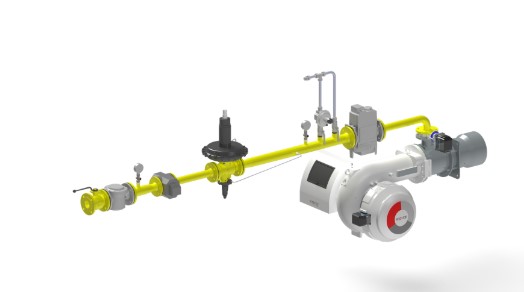How to Maintain Burner System Equipment?
EcoBlog
How to Maintain Burner System Equipment?
Regular maintenance of burners used in industrial facilities and commercial areas is essential for ensuring long-lasting and efficient operation. Periodic inspection of burner system equipment not only saves energy but also enhances safety. In this article, we will discuss the monthly and seasonal maintenance steps for burner systems, as well as important points to consider in boiler and chimney maintenance.
How Should Monthly Burner Maintenance Be Done?
Monthly maintenance is a more detailed process than weekly maintenance and includes the general inspection of the burner and its surrounding components, aiming to prevent potential malfunctions. A combustion analysis should be conducted following maintenance and adjustment procedures. Here are the steps for monthly maintenance:
- Fuel Line Filter Cleaning: The filters in the fuel line leading to the burner should be cleaned regularly.
- Fuel Nozzle and Turbulator Cleaning: Cleaning the fuel nozzle and turbulator surface improves efficiency.
- Flame Tube and Fan Cleaning: Dust accumulated on flame tubes and fans should be removed regularly.
- Cable and Connection Points Inspection: All cable connections should be checked, and any loose connections should be tightened.
- Solenoid Valve and Photocell Cleaning: Cleaning photocells and solenoid valves ensures the smooth operation of the burner.
- Pump Pressure Adjustment: The pump pressure should be checked and adjusted as needed (Fuel-Oil: 25 bar).
- Electrode Inspection: Ignition electrodes and cables should be inspected and adjusted as necessary.
- Flue Gas Analysis: After the burner is operated, a flue gas analysis should be conducted to verify optimal combustion.
How Should Seasonal Burner Maintenance Be Done?
Seasonal maintenance is a comprehensive type of maintenance carried out when the burner will not be used for a long time or when it will be reactivated after long downtimes. This maintenance optimizes the burner's performance, and the results are checked through combustion analysis. The steps for seasonal maintenance are as follows:
- Motor Insulation Resistance Check: The insulation resistance of the electric motor is measured for safety control.
- Electrode Cleaning and Replacement: The surface of the ignition electrodes is cleaned, and any cracked or broken porcelain parts are replaced.
- Fan and Damper Cleaning: The air fan and dampers are cleaned to improve air flow efficiency.
- Nozzle Inspection: The nozzle is cleaned and replaced if necessary.
- Fuel Filter and Photocell Cleaning: The fuel filter and photocell are cleaned to ensure the system operates healthily.
- Boiler and Thermostat Check: The boiler is cleaned internally, and the thermostats are checked for proper operation.
- Combustion Setting Control: Burner combustion settings must be reviewed and adjusted within the scope of seasonal maintenance. Combustion settings are checked during these maintenance sessions.
Maintenance of the Boiler Room and Connection Equipment
In addition to burner maintenance, the boiler room also requires general upkeep. The boiler room should be clean and orderly; at the same time, all connection equipment must operate without issues. Key points to consider specifically in the boiler room are as follows:
- Boiler Room Organization: The boiler room should be kept clean, with tools organized and accessible.
- Leaks and Drips: Any leaks or drips in the fuel and water pipes should be addressed immediately.
- Water Level Check: The system water should be checked with a hydrometer, and necessary precautions should be taken if there is any water shortage.
In general, paying attention to these points in the boiler room can enhance efficiency.

Gas Line
Boiler and Chimney Maintenance
Boiler and chimney maintenance are crucial for the safety and efficiency of the system. Regular tasks include:
- Internal Cleaning of the Boiler: The firebox, smoke tubes, and gas channels of the boiler should be cleaned regularly.
- Chimney Cleaning: The chimney should be cleaned at least once a year.
- Soot and Ash Removal: Soot and ash that accumulate over time should be removed to improve combustion quality.
You can save fuel by generally performing chimney and boiler cleaning along with burner maintenance.You can learn more about energy saving by checking out our blog post 10 tips to save energy.
Conclusion
Maintenance of burner system equipment is essential for energy efficiency, cost savings, and safety. Ecostar’s burner systems provide long-lasting and efficient use when regularly maintained. Ecostar products offer maximum performance and minimum maintenance costs, providing a reliable solution for industrial facilities and commercial enterprises.